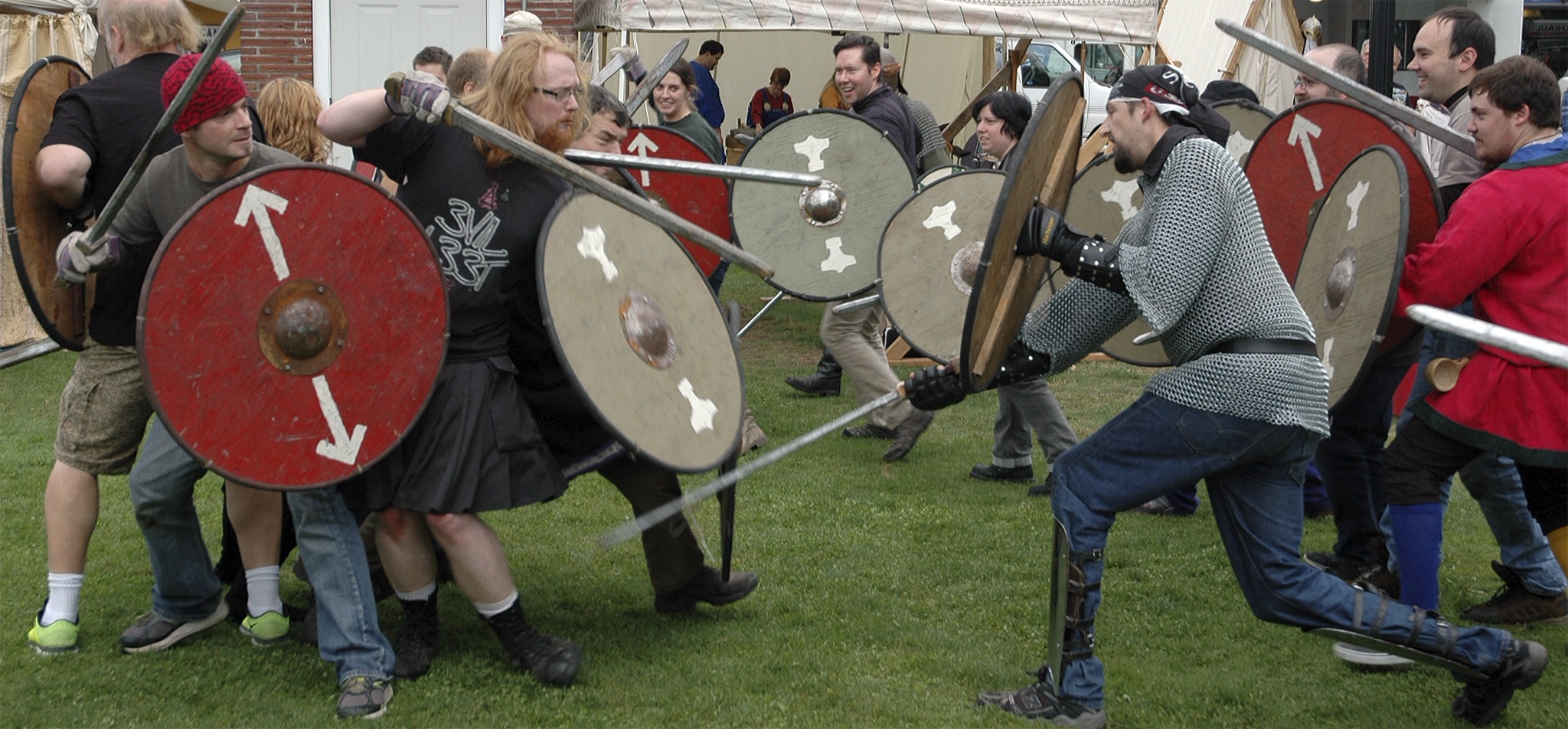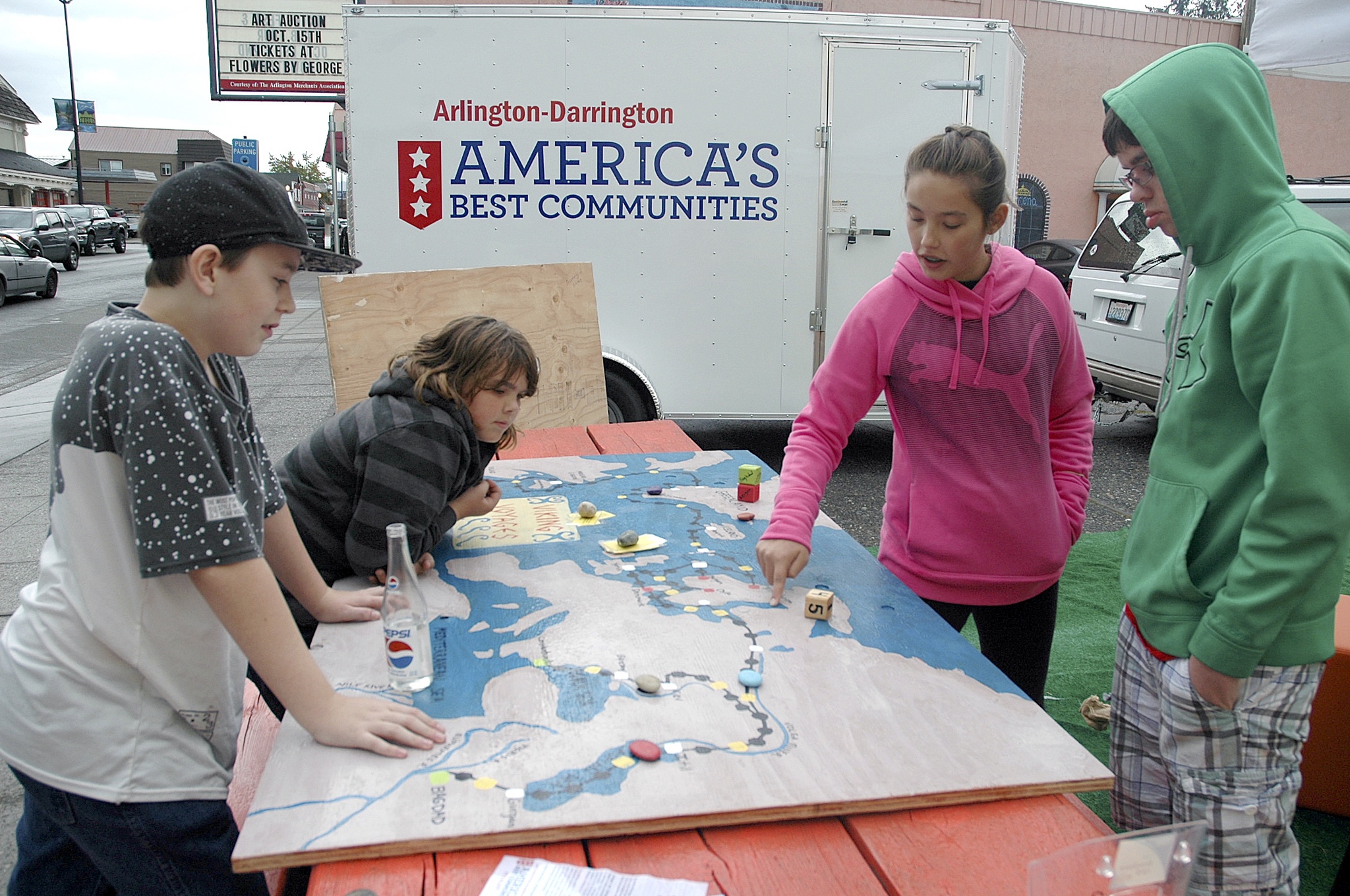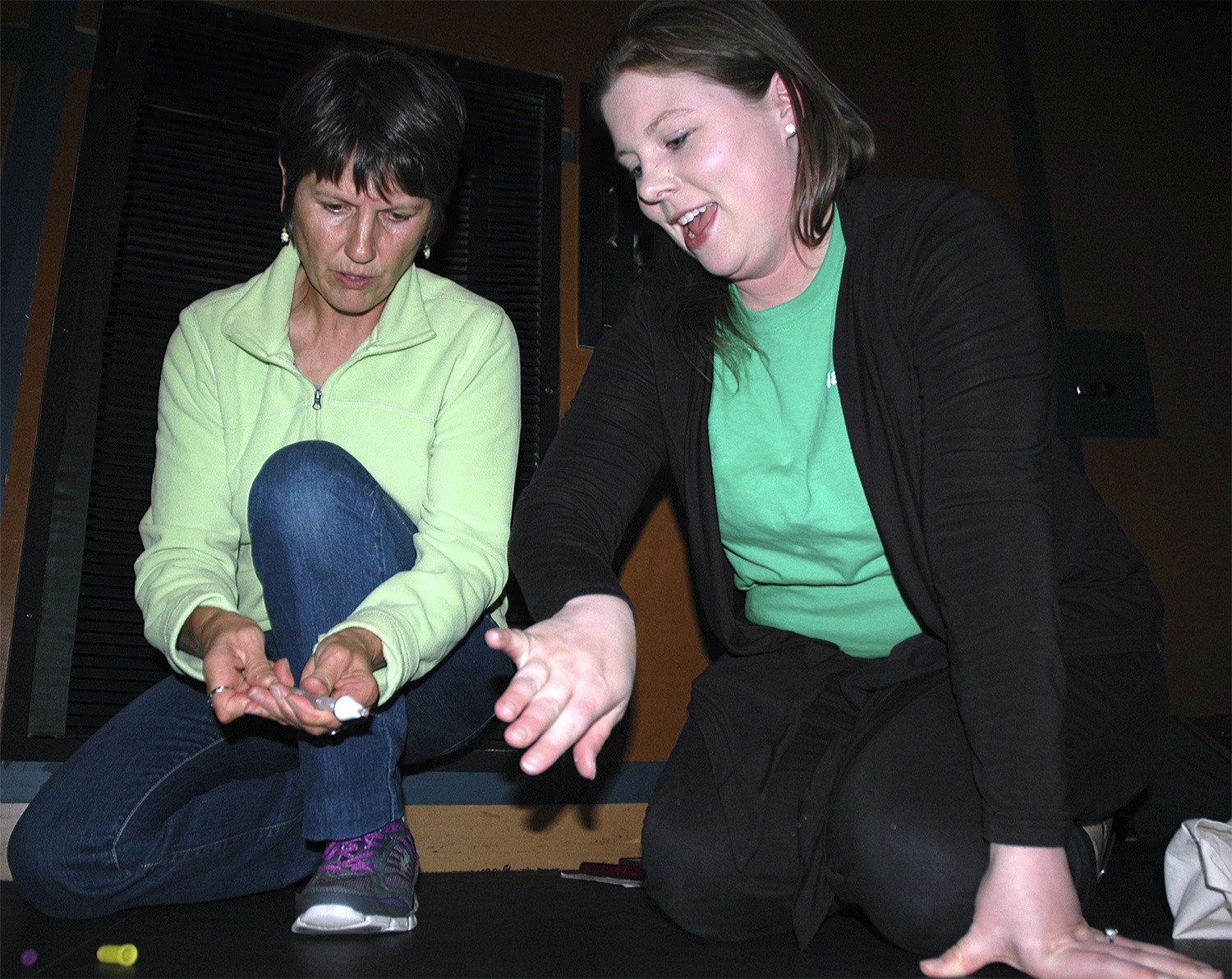ARLINGTON — So, what does it take to put together a Fly-In?
“It’s a fairly simple event,” said Bruce Angell, one of the organizers of the Northwest Experimental Aircraft Association’s annual Fly-In, July 9-13. “We start planning in October, and the physical preparation starts as early as January or February.”
Angell estimated that this year’s Fly-In will use more than 700 volunteers, of which at least half showed up to the Arlington Municipal Airport July 6 and 7.
“We’ve already done all the surveying and marked the ground for all the tents,” Angell said July 5. “It takes four days to set up the city itself. Runway 2-11 and two taxi-ways are closed the Saturday before the start of the Fly-In. Once they’re closed, the larger buildings and other objects are set up in those free areas.”
The weekend before the Fly-In also saw the setup of electrical and other utilities, including sinks, washstands and three mobile shower facilities.
Notices are posted to all the airmen, regarding the closed runway and taxi-ways at flight service stations, while interior and exterior signage for the event is posted July 6 and 7.
“We’ve got 600 sandbags, just for the signs,” Angell said. “We’ve also got 162 garbage cans and 85 sani-cans. We’ll have 10-foot by 10-foot rest stop canopies, since it’ll be warm. We’re inviting 50,000 people here, so we’re responsible for seeing to it that they’re comfortable and their needs are met.”
Preparations have also included marking off parking for aircraft, cars and campers alike, especially since Angell hopes to accommodate more campers this year. The Civil Air Patrol will be marshaling incoming planes, while the Federal Aviation Administration mans a tower constructed for the event and emergency services will maintain a 24-hour presence at the event.
July 8 marked the arrival of the military vehicles to the site. Last year’s Fly-In boasted 88 military vehicles, plus more than 1,400 aircraft, so Angell plans to serve at least as many this year, even though he admitted that rising fuel prices might affect attendance this year.
In addition to the FAA tower, the Fly-In will boast a replica World War II-era control tower, albeit unmanned, made from period materials over the course of 200 man-hours.
“It’s a South Pacific tower,” Angell said. “We looked at so many different pictures, because these towers came tall, short, and in any other configuration. We didn’t have the benefit of the Navy Seabees, who built these towers during WWII, but at the same time, we weren’t getting shot at when we built it.”






